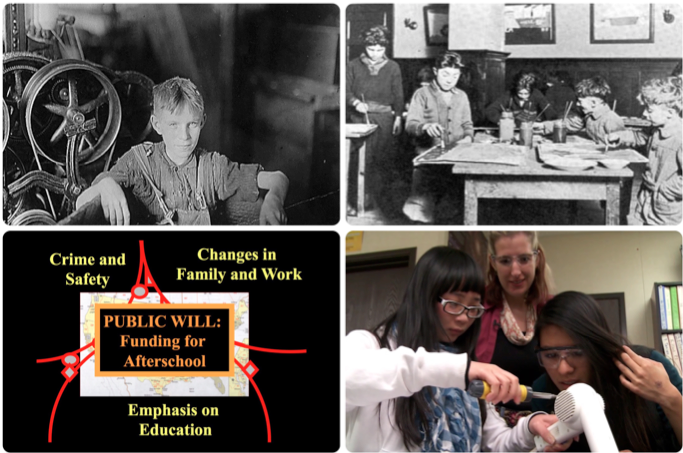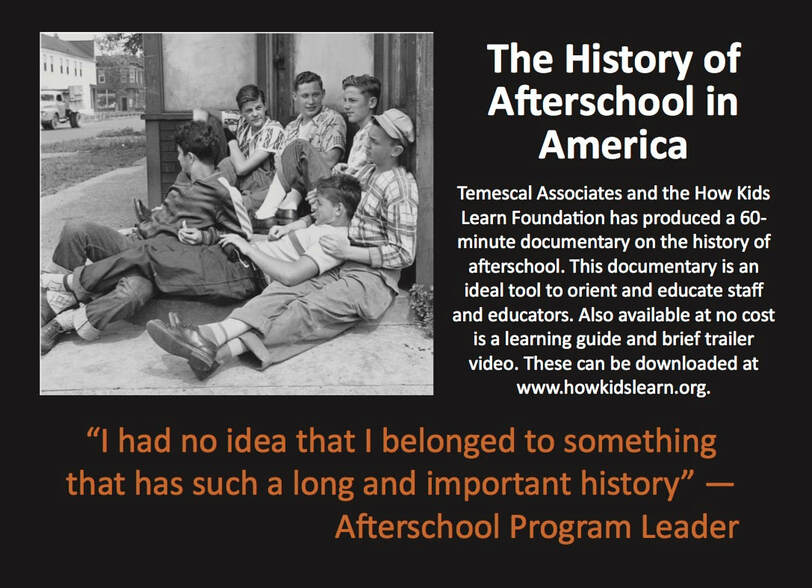History of Afterschool in America
Learning Guide
Printer Friendly Version
Printer Friendly Version
INTRODUCTION
Afterschool programs are now a part of the community landscape. But, few are aware that afterschool has been around for over a hundred years, making important contributions to families and the larger society.
To ensure that afterschool stakeholders appreciate the long history of afterschool youth programs in America, Temescal Associates and the How Kids Learn Foundation created a video to document this history. In this documentary, we attempt to tell the full story of the history of afterschool, it’s important role as a unique institution serving low-income youth. It also looks at the contemporary afterschool field, and looks to the future of afterschool programs.
We have created this learning guide to assist afterschool stakeholders in sharing this documentary and facilitating discussions about the documentary.
FREQUENTLY ASKED QUESTIONS
What is The History of Afterschool in America Documentary?
Afterschool programs are now a part of the community landscape. But, few are aware that afterschool has been around for over a hundred years, making important contributions to families and the larger society.
To ensure that afterschool stakeholders appreciate the long history of afterschool youth programs in America, we have created this documentary to tell this history. In this documentary, we attempt to tell the full story of the history of afterschool, it’s important role as a unique institution serving low-income youth. It also looks at the contemporary afterschool field, and look to the future of afterschool programs.
What inspired the production of this documentary?
The Producer, Sam Piha, was initially inspired by Robert Halpern’s book, Making Play Work. In this book, Dr. Halpern offered a detailed history of out-of-school programs serving the needs of low-income youth. After reading this book, Sam created a series of Power Point
slides on the history of afterschool, which he included in all of his presentations to afterschool stakeholders. Youth workers always responded with great interest and excitement in learning that they belong to something that was an important part of American history. From those experiences, Sam decided it was important to create a video documentary on the subject.
How was The History of Afterschool in America made?
This project took several years to complete. Temescal Associates and the How Kids Learn Foundation identified 20 afterschool leaders across the country and attained their agreement to participate in video interviews. They contacted local youth media programs across the country that would lead these video recorded interviews. Change Agent Productions, a social enterprise dedicated to providing high quality media services while providing workforce opportunities for teens, agreed to assist with producing a brief trailer and the final 60-minute documentary.
How is The History of Afterschool in America structured?
The 60-minute documentary is broken into 12 brief chapters. This allows the flexibility to select those chapters that are most relevant to the audience. Chapters 1 through 3 examine the social upheaval beginning in the late 1800s, which served as the pre-conditions for the early afterschool movement. Chapters 4 and 5 introduce the growing need for child supervision, leading to the playground movement and the rise of afterschool youth programs. Chapters 6 through 12 look at the milestones and events that gave rise to the modern and greatly expanded afterschool movement we see today, and important program concepts and trends.
Who is the intended audience?
The intended audience includes afterschool staff and their stakeholders, older youth, and adults in higher education studying for a career working with young people (education, social work, leisure studies, child and adolescent development, etc.).
Who are the afterschool leaders that were interviewed?
We were interested in enlisting leaders at the national, state, and local levels. National leaders include Karen Pittman (Forum for Youth Investment), Ellen Gannett (NIOST), Robert Granger (formerly WT Grant Foundation), Terry Peterson (Afterschool Alliance), Jodi Grant (Afterschool Alliance), and Pedro Noguera (UCLA), who served as our narrator. California leaders include Bonnie Reiss (USC), Brian Lee (Fight Crime - Invest in Kids), Jennifer Peck (Partnership for Children and Youth), and Sylvia Yee (formerly of the Evelyn & Walter Haas, Jr. Fund). We also include interviews with youth and local program and technical assistance leaders.
How can people use and/or promote the free History of Afterschool in America documentary?
There are several ways that people can get involved. Below are some ideas:
Afterschool programs are now a part of the community landscape. But, few are aware that afterschool has been around for over a hundred years, making important contributions to families and the larger society.
To ensure that afterschool stakeholders appreciate the long history of afterschool youth programs in America, Temescal Associates and the How Kids Learn Foundation created a video to document this history. In this documentary, we attempt to tell the full story of the history of afterschool, it’s important role as a unique institution serving low-income youth. It also looks at the contemporary afterschool field, and looks to the future of afterschool programs.
We have created this learning guide to assist afterschool stakeholders in sharing this documentary and facilitating discussions about the documentary.
FREQUENTLY ASKED QUESTIONS
What is The History of Afterschool in America Documentary?
Afterschool programs are now a part of the community landscape. But, few are aware that afterschool has been around for over a hundred years, making important contributions to families and the larger society.
To ensure that afterschool stakeholders appreciate the long history of afterschool youth programs in America, we have created this documentary to tell this history. In this documentary, we attempt to tell the full story of the history of afterschool, it’s important role as a unique institution serving low-income youth. It also looks at the contemporary afterschool field, and look to the future of afterschool programs.
What inspired the production of this documentary?
The Producer, Sam Piha, was initially inspired by Robert Halpern’s book, Making Play Work. In this book, Dr. Halpern offered a detailed history of out-of-school programs serving the needs of low-income youth. After reading this book, Sam created a series of Power Point
slides on the history of afterschool, which he included in all of his presentations to afterschool stakeholders. Youth workers always responded with great interest and excitement in learning that they belong to something that was an important part of American history. From those experiences, Sam decided it was important to create a video documentary on the subject.
How was The History of Afterschool in America made?
This project took several years to complete. Temescal Associates and the How Kids Learn Foundation identified 20 afterschool leaders across the country and attained their agreement to participate in video interviews. They contacted local youth media programs across the country that would lead these video recorded interviews. Change Agent Productions, a social enterprise dedicated to providing high quality media services while providing workforce opportunities for teens, agreed to assist with producing a brief trailer and the final 60-minute documentary.
How is The History of Afterschool in America structured?
The 60-minute documentary is broken into 12 brief chapters. This allows the flexibility to select those chapters that are most relevant to the audience. Chapters 1 through 3 examine the social upheaval beginning in the late 1800s, which served as the pre-conditions for the early afterschool movement. Chapters 4 and 5 introduce the growing need for child supervision, leading to the playground movement and the rise of afterschool youth programs. Chapters 6 through 12 look at the milestones and events that gave rise to the modern and greatly expanded afterschool movement we see today, and important program concepts and trends.
Who is the intended audience?
The intended audience includes afterschool staff and their stakeholders, older youth, and adults in higher education studying for a career working with young people (education, social work, leisure studies, child and adolescent development, etc.).
Who are the afterschool leaders that were interviewed?
We were interested in enlisting leaders at the national, state, and local levels. National leaders include Karen Pittman (Forum for Youth Investment), Ellen Gannett (NIOST), Robert Granger (formerly WT Grant Foundation), Terry Peterson (Afterschool Alliance), Jodi Grant (Afterschool Alliance), and Pedro Noguera (UCLA), who served as our narrator. California leaders include Bonnie Reiss (USC), Brian Lee (Fight Crime - Invest in Kids), Jennifer Peck (Partnership for Children and Youth), and Sylvia Yee (formerly of the Evelyn & Walter Haas, Jr. Fund). We also include interviews with youth and local program and technical assistance leaders.
How can people use and/or promote the free History of Afterschool in America documentary?
There are several ways that people can get involved. Below are some ideas:
- Donate: You can donate to the How Kids Learn Foundation. All donations will be used to support our campaign to promote this documentary.
- Host a viewing: Serve as a “history ambassador” by showing this documentary to interested audiences and facilitate discussion questions (which can be found in the Learning Guide).
- Trailer: Build awareness of this documentary by showing the 2.5 minute trailer at conferences and other gatherings of afterschool stakeholders.
- Staff development: This documentary is an excellent resource to orient and train new and existing program staff.
- Higher education: Instructors can show this documentary to students who are studying to enter a career working with youth.
- Newsletters and social media: Organizations and individuals can promote awareness of this resource through their newsletters and social networks. Samples can be found in the History of Afterschool media kit.
- Distribute postcards: We have printed 5x7 postcards, which can be distributed to afterschool stakeholders. Contact Temescal Associates ([email protected]) if you would like a stack mailed to you.
Are there tools to assist those who want to use or promote this documentary?
We have developed a media kit and learning guide for this purpose. The learning guide includes activities and discussion questions. This guide also includes a list of keywords and their definitions, and a historical timeline. The media kit includes information on the documentary such as an FAQ and sample text for use in newsletters, social media posts, etc.
What is the History of Afterschool in America Learning Guide?
This learning guide was developed to assist afterschool leaders in the sharing of The History of Afterschool in America documentary and promote learning using activities and discussion questions. This guide also includes a list of keywords and their definitions, and a historical timeline.
How can people view and access the full documentary, trailer, and additional documentary tools?
These can be downloaded for free. The documentary can also be purchased on DVD by contacting Temescal Associates.
HOSTING A SCREENING: SUGGESTIONS
If you choose to host a screening of the History of Afterschool in America documentary, you can choose to either show the entire documentary (60-minutes) or show in sections. If you
choose to show in sections, below are some suggestions:
BY CHAPTER
Below are chapter summaries, definitions of keywords and phrases, and discussion questions to support discussion of and learning from the History Of Afterschool documentary.
Chapter 1: Introduction
Length: 1:40 (Time counter: 0:00 -1:40)
We have developed a media kit and learning guide for this purpose. The learning guide includes activities and discussion questions. This guide also includes a list of keywords and their definitions, and a historical timeline. The media kit includes information on the documentary such as an FAQ and sample text for use in newsletters, social media posts, etc.
What is the History of Afterschool in America Learning Guide?
This learning guide was developed to assist afterschool leaders in the sharing of The History of Afterschool in America documentary and promote learning using activities and discussion questions. This guide also includes a list of keywords and their definitions, and a historical timeline.
How can people view and access the full documentary, trailer, and additional documentary tools?
These can be downloaded for free. The documentary can also be purchased on DVD by contacting Temescal Associates.
HOSTING A SCREENING: SUGGESTIONS
If you choose to host a screening of the History of Afterschool in America documentary, you can choose to either show the entire documentary (60-minutes) or show in sections. If you
choose to show in sections, below are some suggestions:
- Section 1 – Pre-conditions and early history (0:00-17:54 minutes; Chapter 1 -6)
- Section 2 – Influences that shaped the modern afterschool movement and the emergence of new models (17:55 – 44:05 minutes; Chapter 7 – 10)
- Section 3 - Historical themes and important new trends and the future of afterschool (44:06 – 1:03:40 minutes; Chapter 11 – 12)
BY CHAPTER
Below are chapter summaries, definitions of keywords and phrases, and discussion questions to support discussion of and learning from the History Of Afterschool documentary.
Chapter 1: Introduction
Length: 1:40 (Time counter: 0:00 -1:40)
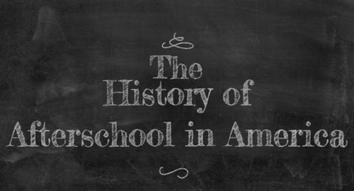
Summary: Afterschool programs are now a part of the community landscape. This has been driven by a family need for afterschool supervision of youth as well as the need for youth to have expanded learning opportunities. Over 10 million kids across the country are participating in afterschool programs. Afterschool programs employ over 550,000 workers. Few of these workers or other afterschool stakeholders are aware that afterschool has been around for a long time or of the important contributions that afterschool programs have made, dating back to the early 1900s.
Due to the large public and private investments, afterschool has greatly expanded and becoming its own field. Thus, we need to document, share, and celebrate our history with others. Think of education, social work, and medicine – each has a documented history. We have a growing body of literature and research, but can do more to fully document our history in America that dates back to the early 1900s.
In this documentary, we attempt to tell the full story of the history of afterschool, it’s important role as a unique institution serving low-income youth, as well as lessons that we can draw from this history. We also look at the contemporary afterschool field, and look to the future of afterschool programs. This documentary is largely inspired by the research of Robert Halpern and his book, Making Play Work: The Promise of After-School Programs for Low-Income Children.
Keywords/Phrases:
Chapter 2: Social Upheaval, Industrialization, and Child Labor
Length: 5:15 (Time counter: 1:40-6:55)
Due to the large public and private investments, afterschool has greatly expanded and becoming its own field. Thus, we need to document, share, and celebrate our history with others. Think of education, social work, and medicine – each has a documented history. We have a growing body of literature and research, but can do more to fully document our history in America that dates back to the early 1900s.
In this documentary, we attempt to tell the full story of the history of afterschool, it’s important role as a unique institution serving low-income youth, as well as lessons that we can draw from this history. We also look at the contemporary afterschool field, and look to the future of afterschool programs. This documentary is largely inspired by the research of Robert Halpern and his book, Making Play Work: The Promise of After-School Programs for Low-Income Children.
Keywords/Phrases:
- Afterschool – Sometimes referred to as out of school time or more recently, expanded learning time or expanded learning programs, afterschool represents youth programs serving youth in the non-school hours, usually from 3pm-6pm, and including summer hours.
- Field – this refers to a particular branch of study, which often has its own body of literature, as well as a documented history (ex: social work, nursing, medicine, etc.).
- Documented history – a history of major milestones and important individuals that help build the field.
- Robert Halpern – a leading researcher, author, and advocate that helped shape the modern afterschool movement.
Chapter 2: Social Upheaval, Industrialization, and Child Labor
Length: 5:15 (Time counter: 1:40-6:55)
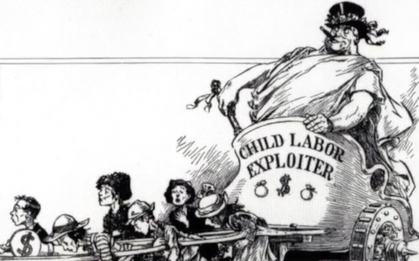
Summary: The history of afterschool in America begins with an understanding of the social upheaval and changes in family life that came with the period of industrialization in the U.S. The seismic changes included the shift from hand labor to machine technology or factories, the placement of factories near big cities, which attracted workers from the countryside. It also included the need for factory labor, which resulted in a large wave of immigration and the use of child labor. These changes served as the pre-conditions of the afterschool movement, which later resulted in a huge demand for child supervision.
Keywords/Phrases:
Keywords/Phrases:
- Industrial Era - The industrial era in the United States or the industrial revolution as it's sometimes called is the period roughly 1880 to 1915 in the United States. It represents the transition from manual based labor to machines based manufacturing.
- The Great Immigration - The large wave of immigration to come to the United States is roughly between 1890 and 1915 during the period of the industrial revolution.
- Settlement Houses - Settlement houses were built, beginning in 1886, to help the urban poor and new immigrants. Most were large buildings in crowded immigrant neighborhoods of industrial cities, where settlement workers provided services for neighbors and sought to remedy poverty. In 1889, Jane Addams and Ellen Gates Starr launched Hull House in Chicago. As word of these experiments spread, other settlements appeared in New York, Boston, Philadelphia, and Chicago.
- Child labor – The use of children as laborers in factories, agriculture, mining, and other businesses. Determined efforts to regulate or eliminate child labor began in 1900. The Fair Labor Standards Act of 1938 required that children under the age of 16 not be employed during school hours and prohibited children under 18 from being employed in certain dangerous jobs.
- What are the main points in this chapter?
- What is new information for you?
- What's the most surprising thing from this chapter?
- How is our life different from those who lived in the past, and how is it the same?
- This chapter includes two political cartoons, one of which is shown above. What is the cartoonist trying to say about this time in history? (You can view a video entitled How To Analyze Political Cartoons at this link: https://youtu.be/pCp2RHCn76g)
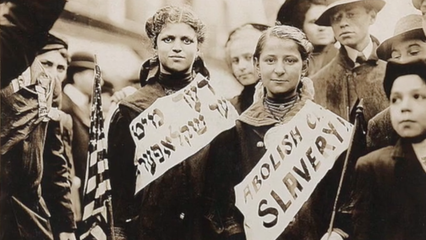
Chapter 3: The Progressive Era and Public School
Length: 3:59 (Time counter: 6:56- 10:55)
Summary: The progressive era was largely a response to the industrial revolution. During this era, we saw the enactment of laws that prohibited the use of child labor, the beginning of compulsory education and public schools, as well as progressive views on education, and “childhood”.
Keywords/Phrases:
Discussion Questions:
Chapter 4: The Need for Child Supervision After School
Length: 2:31 (Time counter: 10:56-13:27)
Length: 3:59 (Time counter: 6:56- 10:55)
Summary: The progressive era was largely a response to the industrial revolution. During this era, we saw the enactment of laws that prohibited the use of child labor, the beginning of compulsory education and public schools, as well as progressive views on education, and “childhood”.
Keywords/Phrases:
- Progressive era - The progressive era (1890s to 1920s) was largely a response to the industrial revolution. During this era, we saw the enactment of laws that prohibited the use of child labor, the beginning of compulsory education and public schools, as well as progressive views on education, and “childhood”.
- Compulsory education – State laws were passed that required young people to attend school, which resulted in the development of the public school system in the United States.
- “Childhood” – Reformers during the progressive era maintained that children were not simply “small adults”. Rather, childhood was a separate developmental stage leading to adulthood and children had specific needs. They also promoted the idea that children’s play was important and that children required protection.
- John Dewey - (1859-1952) was an American psychologist, philosopher, educator, social critic and political activist. He was outspoken on education, domestic and international politics, and numerous social movements. Among the many concerns that attracted Dewey's support were women's suffrage, progressive education, educator's rights, the Humanistic movement, and world peace. (Source: www.dewey.pragmatism.org/)
- Jane Addams - (1860 - 1935), American social reformer and pacifist, cowinner (with Nicholas Murray Butler) of the Nobel Prize for Peace in 1931. She is probably best known as a cofounder of Hull House in Chicago, one of the first social settlements in North America. (Source: www.britannica.com)
Discussion Questions:
- How do Progressive Era ideas about childhood shape our current afterschool landscape?
- What do you think about the way Gordon Alexandre characterizes compulsory or mandatory education in the interview?
Chapter 4: The Need for Child Supervision After School
Length: 2:31 (Time counter: 10:56-13:27)
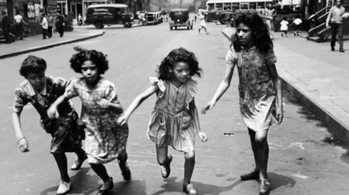
Summary: As young people left the mines and factories and entered public schools, children were unsupervised between the end of school and the time that their parents ended work and returned home. Combined with the desire of immigrant youth to escape the crowded conditions of tenement housing, society was faced with the dilemma of what to do with the hordes of unsupervised youth after the new “school day”.
Keywords/Phrases:
Discussion Questions:
Keywords/Phrases:
- Tenement housing - In the 19th century, more and more people began crowding into America’s cities, including thousands of newly arrived immigrants. Buildings that had once been single-family dwellings were increasingly divided into multiple living spaces to accommodate this growing population. Known as tenements, these narrow, low-rise apartment buildings were all too often cramped, poorly lit and lacked indoor plumbing and proper ventilation.
- Unsupervised children- As young people left the mines and factories and entered public schools, children were unsupervised between the end of school and the time that their parents ended work and returned home.
Discussion Questions:
- How is our life different from those who lived in the past, and how is it the same?
- Where do unsupervised children hang out now between the time school gets out and their caregivers get home?
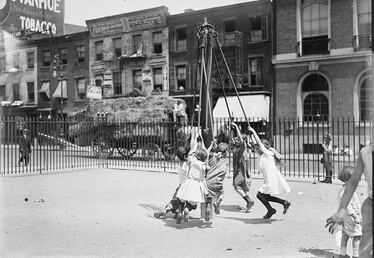
Chapter 5: The Playground Movement and the Beginning of Youth Programs
Length: 2:54 (Time counter: 13:28 –16:22)
Summary: During this time, we see the emergence of the playground movement and the birth of youth programs led by settlement houses, religious and charitable organizations, some of which grew to become national organizations like the YMCAs and Boys and Girls Clubs.
Keywords/Phrases:
Discussion Questions:
Chapter 6: Afterschool Responds to Emerging Issues
Length: 1:31 (Time counter: 16:23-17:54)
Length: 2:54 (Time counter: 13:28 –16:22)
Summary: During this time, we see the emergence of the playground movement and the birth of youth programs led by settlement houses, religious and charitable organizations, some of which grew to become national organizations like the YMCAs and Boys and Girls Clubs.
Keywords/Phrases:
- Playground movement - The playground movement in America began in the late 1880s as an answer to the industrial revolution realities of crowded cities and long work days. Hand-in-hand with the settlement houses being formed, the playground movement sought to save the poor, immigrant, and homeless children from unhealthy crowded tenement neighborhoods. (Source: www.pgpedia.com)
- Socialization- A process by which individuals acquire the knowledge, language, social skills, and value to conform to the norms and roles required for integration into a group or community. (Source: www.businessdictionary.com)
Discussion Questions:
- How did the Playground Movement support immigrant and youth of color?
- How do you see the same dynamics of this time playing out today?
Chapter 6: Afterschool Responds to Emerging Issues
Length: 1:31 (Time counter: 16:23-17:54)
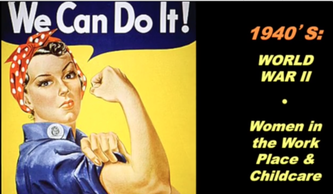
Summary: Like other human service institutions, afterschool organizations worked to respond to the great issues and challenges of the day. During the great immigration of the early 1900s, youth programs offered socialization to their new country. In World War I, the focus was on helping young people deal with fear and loss, and during the Great Depression that followed, the concerns were nutrition and hunger. In the late 20th century, the challenge was about the effects of poverty including delinquency, drug addiction, teen pregnancy, gangs, and school failure.
Keywords/Phrases:
Discussion Questions:
Chapter 7: Influences that Drove the Expansion of Afterschool
Length: 6:52 (Time counter: 17:55-24:47)
Keywords/Phrases:
- Meeting the “Challenges of the day” – Afterschool youth programs did not have their own identity and guiding principles. Rather, they acted in response to the challenges faced by the country. This changed every few years.
- Rosie the Riveter - Rosie the Riveter is a cultural icon of World War II, representing the women who worked in factories and shipyards during World War II, many of whom produced munitions and war supplies. (Source: Wikipedia)
- Poverty and Prevention – Many of the youth programs from 1960 to 1990, found funding by appealing to the idea of preventing negative behaviors associated with poverty (delinquency, use of alcohol and other drugs, teen pregnancy and involvement in gangs, etc.).
Discussion Questions:
- What are the emerging societal issues that afterschool programs are responding to today?
Chapter 7: Influences that Drove the Expansion of Afterschool
Length: 6:52 (Time counter: 17:55-24:47)
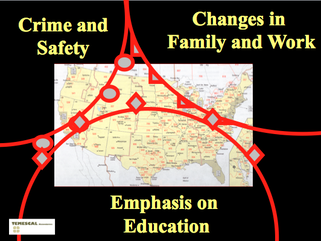
Summary: Between the mid-1980s and the early 2000s, there was huge growth in the number of afterschool programs. Like in earlier times, this was influenced by societal factors. These came together like a perfect storm that drove the modern afterschool movement. There were several important studies in the early 1990s and early 2000s that reported on the need and importance of afterschool programs and informed the policies that fueled the growth. These studies also shaped the issues that afterschool programs addressed.
Keywords/Phrases:
Discussion Questions:
Chapter 8: “School as Place”, Advocacy, and the Asset Model
Length: 7:29 (Time counter: 24:48- 32:17)
Keywords/Phrases:
- Societal factors and afterschool – The societal factors that drove the call for afterschool access included concerns about safety and crime prevention, school failure and the achievement gap, and changes in family and work (women entering the workforce, both parents working, and single parent families)
- A Matter of Time: Risk and opportunity in the nonschool hours (1992) – An important report from the Carnegie Foundation that shined a light on the risks that young people face after the school day and the potential opportunities.
- Community Programs to Promote Youth Development – After-school programs, scout groups, community service activities, religious youth groups, and other community-based activities have long been thought to play a key role in the lives of adolescents. But what do we know about the role of such programs for today's adolescents? How can we ensure that programs are designed to successfully meet young people's developmental needs and help them become healthy, happy, and productive adults? This report from the National Academies of Science, Engineering, and Medicine explored these questions, focusing on essential elements of adolescent well-being and healthy development. It offered recommendations for policy, practice, and research to ensure that programs are well designed to meet young people's developmental needs. (Source: www.nap.edu)
- Prime time for juvenile crime – Research revealed that the hours after school ends is the prime time for juvenile crime, kids becoming victims, and other dangers. This information was a major driver for increasing access to afterschool programs.
- America After 3pm - America After 3PM is a project of the Afterschool Alliance. It spans a decade of data chronicling how children spend the hours between 3 and 6 p.m. — the hours after school ends and before parents typically return home from work. It highlights the trends of afterschool program participation, documents the benefits associated with
- participation in afterschool programs, and measures public support for afterschool programs.
- Important Researchers – Deborah Lowe Vandell, Milbrey McLaughlin, Robert Halpern, and Reed Larson (among others) were influential afterschool researchers.
Discussion Questions:
- As you consider the more recent history of afterschool, what seems new to you? What are ideas or concepts that you see playing out today?
Chapter 8: “School as Place”, Advocacy, and the Asset Model
Length: 7:29 (Time counter: 24:48- 32:17)
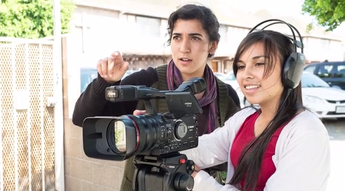
Summary: During this formative period, we saw several important models develop. Many of these models were housed in schools, versus the community. The ideas of “school as place” and partnerships between schools and community providers was not new, but they caught on in a big way.
In many ways, the growth of the afterschool movement was a response to the increased needs of working and single-parent families, as well as influential studies and reports touting the importance of out-of-school learning. It was also shaped by the contributions of powerful messengers and advocacy groups, including law enforcement and others.
Another important development was the move from a deficit model (which defined youth as a problem about to happen) to an asset model (which defined the kinds of support and opportunities that youth needed to be successful in school, work, and life).
Keywords/Phrases:
Discussion Questions:
Chapter 9: Going to Scale with Public Dollars and Foundation Support
Length: 5:24 (Time counter: 32:18 -37:42)
In many ways, the growth of the afterschool movement was a response to the increased needs of working and single-parent families, as well as influential studies and reports touting the importance of out-of-school learning. It was also shaped by the contributions of powerful messengers and advocacy groups, including law enforcement and others.
Another important development was the move from a deficit model (which defined youth as a problem about to happen) to an asset model (which defined the kinds of support and opportunities that youth needed to be successful in school, work, and life).
Keywords/Phrases:
- School as place – Traditionally, youth programs were community based. During the late 1990s, the argument for school based afterschool grew.
- Underutilized school space – Schools were increasingly viewed as public and community facilities that close in the afternoons, evenings, and summers – thus were underutilized.
- Beacon Schools and Centers – In 1991, the city of New York opened the first Beacon Schools. These were school-based community centers that served children age six and older, and adults. Today, there are currently 91 Beacons located throughout the five boroughs of New York City operating in the afternoons and evenings, on weekends, and during school holidays and vacation periods, including the summer. The Beacon model was later adopted by cities across the country including San Francisco, Denver, Minneapolis, San Pablo, and others.
- Advocates/Messengers – The growth of the modern afterschool movement was supported by important advocates and messengers including the Afterschool Alliance, the National AfterSchool Association (NAA), National Institute of Out of School Time (NIOST), C.S. Mott Foundation, Fight Crime – Invest in Kids, and others.
- Lights On Afterschool - Launched in October 2000, Lights On Afterschool is the only nationwide event celebrating afterschool programs and their important role in the lives of children, families and communities. The effort has become a hallmark of the afterschool movement and generates media coverage across the country each year. The Afterschool Alliance organizes Lights On Afterschool to draw attention to the many ways afterschool programs support students by offering them opportunities to learn new things—such as science, community service, robotics, Tae Kwon Do and poetry—and discover new skills. The events send a powerful message that millions more kids need quality afterschool programs. (Source: The Afterschool Alliance)
- Law enforcement and afterschool – Law enforcement organizations were important advocates for growing access to afterschool youth programs. They were brought to the table by Fight Crime – Invest in Kids and other organizations.
- Deficit to Asset model – In the 1990s, there was a shift in perspective which moved from viewing youth as “problems about to happen” to young people’s strengths and assets which needed to be nurtured.
Discussion Questions:
- How are your programs Asset based specifically? What are you doing specifically that focuses on youth, family and community assets?
- How is your school “school as place”? What are the current practices that contribute to this concept?
Chapter 9: Going to Scale with Public Dollars and Foundation Support
Length: 5:24 (Time counter: 32:18 -37:42)
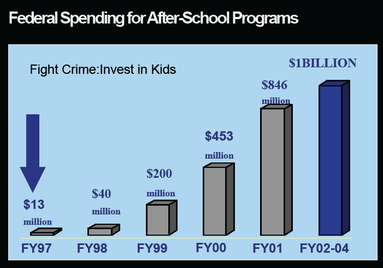
Summary: Advocates knew that the scaling up of afterschool programs could not be accomplished with private dollars alone – this depended on allocation of public tax dollars. This was exemplified by the launch and growth of the federal 21st Century Community Learning Centers initiative and the voter approval of Proposition 49 in California. Growth was also supported by national and local private foundations.
Keywords/Phrases:
The ASES Program funded the establishment of local after school education and enrichment programs. These programs are created through partnerships between schools and local community resources to provide literacy, academic enrichment and safe constructive alternatives for students in kindergarten through ninth grade (K-9). (Source: California Department of Education)
Discussion Questions:
Chapter 10: Youth Outcomes, Accountability, Quality, and Older Youth
Length: 6:22 (Time counter: 37:43 – 44:05)
Keywords/Phrases:
- 21st Century Community Learning Centers (CCLC)- In 1994, The U.S. Congress created 21st Century Community Learning Centers through the Elementary and Secondary Education Act. These centers were described as “centers of activity” in communities, offering “activities and services provided by community members for the benefit of school children...as well as for the benefit of the adult members of the community.” In 2001, the U.S. Congress expanded the 21st Century program through the No Child Left Behind Act. Congress increased the funding for the 21st Century program from the original amount of $750,000 to $1.2 billion. (Source: The Afterschool Alliance). The federal Department of Education currently describes the 21st CCLC program as “providing academic enrichment opportunities during non-school hours for children, particularly students who attend high-poverty and low-performing schools. The program helps students meet state and local student standards in core academic subjects, such as reading and math; offers students a broad array of enrichment activities that can complement their regular academic programs; and offers literacy and other educational services to the families of participating children”.
- California After School Education & Safety (ASES) Program/ Proposition 49 - The After School Education and Safety (ASES) Program is the result of the 2002 California voter-approved initiative, Proposition 49. The current funding level for the ASES program is $550 million.
The ASES Program funded the establishment of local after school education and enrichment programs. These programs are created through partnerships between schools and local community resources to provide literacy, academic enrichment and safe constructive alternatives for students in kindergarten through ninth grade (K-9). (Source: California Department of Education)
- Public private partnerships – These are partnerships between government entities supported by public tax dollars and private funders, usually nonprofit foundations. These kinds of partnerships allowed the afterschool movement to go to scale.
Discussion Questions:
- What is new information for you?
- How does that information shape your thinking or understanding of your program?
- How are you advocating or developing your community as advocates to preserve this tax set aside?
Chapter 10: Youth Outcomes, Accountability, Quality, and Older Youth
Length: 6:22 (Time counter: 37:43 – 44:05)
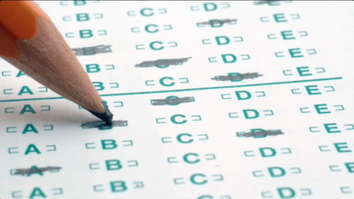
Summary: The enormous increases in funding and program enrollment brought a new era of accountability. As a social program, afterschool youth programs were asked to justify their sustained funding with data showing improvement in youth outcomes. These came as the afterschool field was struggling to define its purpose. The challenge was ensuring that we hold afterschool programs to outcomes that are realistic and focused on the needs of youth – not solely on the needs of the educational institutions.
Early on, the outcomes were narrow, and focused on improving standardized test scores. Later, program outcomes were broadened to include measures related to healthy development. There was also a call for improving program quality, which included the dissemination of best practices and the development of program standards.
Afterschool programs tended to be identified with the needs of younger children. High school afterschool was considered an oxymoron. The inclusion of high school youth was advanced by the 2002 legislation in California, which dedicated 50% of all 21st Century Community Learning Center dollars to afterschool programs in public high schools.
Keywords/Phrases:
Discussion Questions:
Chapter 11: Historical Themes and Important New Trends
Length: 15:14 (Time counter: 44:06 – 59:20)
Early on, the outcomes were narrow, and focused on improving standardized test scores. Later, program outcomes were broadened to include measures related to healthy development. There was also a call for improving program quality, which included the dissemination of best practices and the development of program standards.
Afterschool programs tended to be identified with the needs of younger children. High school afterschool was considered an oxymoron. The inclusion of high school youth was advanced by the 2002 legislation in California, which dedicated 50% of all 21st Century Community Learning Center dollars to afterschool programs in public high schools.
Keywords/Phrases:
- Youth outcomes – These are measurements designed to show changes in youth outcomes brought about by participation in afterschool programs (test scores, graduation, acquisition of important skills, etc.).
- Afterschool program standards – Program standards (developed by national organizations, state, and local initiatives) were developed to promote quality afterschool programs.
- Accountability – Measures to answer the question, “what difference does participation in afterschool programs make?”
- High school afterschool – Afterschool programs were traditionally made available to young people grades K-8. Once afterschool programs went to scale for the K-8 population, afterschool programs serving older youth expanded in the early 2000s in Chicago, New York, California, and other locales.
Discussion Questions:
- Consider the age of the young people you serve and what you actually do with them. Do the current accountability measures make sense to you? Why or why not?
Chapter 11: Historical Themes and Important New Trends
Length: 15:14 (Time counter: 44:06 – 59:20)
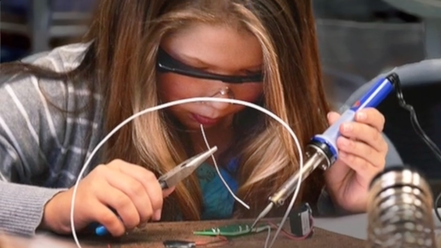
Summary: In looking over the first century of afterschool, we see themes and issues that are similar to the ones we have today. We are learning more everyday about the important skills and experiences that young people need to be successful in school and life, the challenges they will face in the future, and the needs of specific populations of youth. This has expanded the conversation about what afterschool programs can or should address.
We also know that afterschool programs will continue to respond to new demands from funders and the public. As a result, afterschool programs will continue to expand and evolve over time.
Keywords/Phrases:
Discussion Questions:
Chapter 12: The Future of Afterschool
Length: 1:58 (Time counter: 59:21 – 1:03:40)
We also know that afterschool programs will continue to respond to new demands from funders and the public. As a result, afterschool programs will continue to expand and evolve over time.
Keywords/Phrases:
- Afterschool themes: then and now – These themes (cited below) have been associated with the afterschool movement from its inception in the 1900s through today.
- Science, Technology, Engineering, Arts, and Math (STEAM) – Many afterschool programs are working to increase young people’s interest and skills regarding STEAM.
- Summer learning loss - Summer learning loss is the loss of academic skills and knowledge over the course of summer holidays. The loss in learning varies across grade level, subject matter, and family income. Low income students generally lose about 2 months of reading achievement. (Source: Wikipedia)
- Social emotional learning (SEL) - the process through which children and adults acquire and effectively apply the knowledge, attitudes, and skills necessary to understand and manage emotions, set and achieve positive goals, feel and show empathy for others, establish and maintain positive relationships, and make responsible decisions. (Source: www.Casel.org)
- Context – Afterschool programs are increasingly working to take into account young people’s real life context (race, urban/rural, culture, sexual orientation, etc.) in the design of their programs.
- Gender focused programming - Afterschool programs are increasingly working to take into account the specific needs of girls and those of boys in the design of their programs.
- Equity - Afterschool programs are increasingly working to take into account the issues of fairness and justice in our communities and larger society in the design of their programs.
- Growth mindset- The concept of a growth mindset was developed by psychologist Carol Dweck and popularized in her book, Mindset: The New Psychology of Success…In a growth mindset, people believe that their most basic abilities can be developed through dedication and hard work—brains and talent are just the starting point. (www.edglossary.org)
Discussion Questions:
- Below are a number of themes that have been associated with afterschool since the early 1900s. Can you select one theme that you think is most relevant today?
- An on-going tension between school and community - should afterschool be an important counter-point to the school experience?
- The on-going pressure for afterschool to address the issues of the day and the deficits of other institutions.
- Afterschool programs tended to be under-funded and undervalued, resulting in their sometimes over-promising in order to secure funding.
- The belief that the sustained funding of afterschool is not seen as the work of government, instead the work of charities and private funding – which is not consistent or reliable.
- A reliance on a part-time, low-paid and volunteer workforce.
- Concerns about professionalization, standard methods and quality.
- The question of outcomes: what should afterschool be responsible to show as outcomes?
- The difficulty of finding appropriate, dedicated program space in school-based programs.
Chapter 12: The Future of Afterschool
Length: 1:58 (Time counter: 59:21 – 1:03:40)
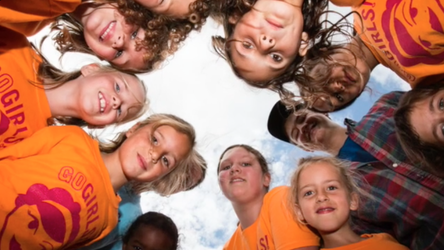
Summary: What we have seen over the last century is that families need access to structured youth activities after the school day. This will continue to exist in the future-this need is not going away. The exact form that these activities and opportunities will take depends on future needs and trends.
It is important that we work collectively to maintain the public will that leads to federal, state, and local support for these programs. Further, it is important that we scale our expectations of afterschool programs to the amount of resources that they are given.
Keywords/Phrases:
Discussion Questions:
Your Next Chapter of Afterschool
The story of afterschool is not over. The next chapter of afterschool, whether it focuses on our expectations or funding support, has not been written. The next chapter is not something that will be done to you, but rather is something you can help shape.
Discussion Questions:
Group activity:
After developing an answer to “What am I doing today to shape the next chapter of afterschool?” people can the post their answers to social media with the tag #ThisisAfterschool and add a photo or video to the post. The group could share the text of their posts with each other before putting them on Twitter, Facebook, etc. and the group can discuss what makes for a compelling social media post.
Resources:
To stay current on what is happening with afterschool nationally follow the Afterschool Alliance on Facebook and Twitter and visit the Afterschool Alliance Federal Policy webpage often: http://www.afterschoolalliance.org/policyFederal.cfm
To find out what is happening in your state, visit the website for the State Afterschool Networks: http://www.statewideafterschoolnetworks.net/.
TIMELINE
ACKNOWLEDGEMENTS
Temescal Associates, the How Kids Learn Foundation, and Change Agent Productions produced the History of Afterschool in America. Below are some details about these organizations.
It is important that we work collectively to maintain the public will that leads to federal, state, and local support for these programs. Further, it is important that we scale our expectations of afterschool programs to the amount of resources that they are given.
Keywords/Phrases:
- Public will – This refers to the beliefs and convictions of the voting public, which can influence lawmakers.
- Expectations of afterschool – This refers to the things that we believe afterschool should and should not be accountable for. These are things that are within the control of afterschool programs and are realistic given the amount of resources they are given.
Discussion Questions:
- Think back over the entire video – what ideas or concepts do you remember?
- What has been most intriguing or interesting?
- What is a concept or idea that was brand new to you?
- How does it make you think of the field of afterschool now that you know a little bit about the long history?
- How would you describe what you do now knowing your history?
- What is a key takeaway from the History of Afterschool?
Your Next Chapter of Afterschool
The story of afterschool is not over. The next chapter of afterschool, whether it focuses on our expectations or funding support, has not been written. The next chapter is not something that will be done to you, but rather is something you can help shape.
Discussion Questions:
- What lessons do you see in the video or ways you think viewing the video can inspire action and encourage people to help shape the destiny of afterschool programs?
- What am I doing today to shape the next chapter of afterschool? And how can I involve more people in that vision? Examples could be:
- I am working to build on the quality of programs for our kids;
- I am working to make STEM learning hands on;
- I am helping youth shape career paths they never imagined;
- I am asking our city leaders to fund programs; and/or
- I am asking our members of Congress to fund afterschool.
Group activity:
After developing an answer to “What am I doing today to shape the next chapter of afterschool?” people can the post their answers to social media with the tag #ThisisAfterschool and add a photo or video to the post. The group could share the text of their posts with each other before putting them on Twitter, Facebook, etc. and the group can discuss what makes for a compelling social media post.
Resources:
To stay current on what is happening with afterschool nationally follow the Afterschool Alliance on Facebook and Twitter and visit the Afterschool Alliance Federal Policy webpage often: http://www.afterschoolalliance.org/policyFederal.cfm
To find out what is happening in your state, visit the website for the State Afterschool Networks: http://www.statewideafterschoolnetworks.net/.
TIMELINE
- 1880-1915 Industrial Era and The Great Immigration
- 1890 – 1920 Progressive Era
- 1894 The Beginning of the Playground Movement
- 1899 – 1938 State and Federal Laws Ending Child Labor
- Early 1900s State Laws Require That Children Go to School
- 1914 – 1918 -WWI
- 1929 – 1939 – The Great Depression
- 1939 – 1945 –WWII
- 1964 – 1965 – President Lyndon Johnson’s War on Poverty
- 1990s – Deficit to Assets Model
- 1992 – A Matter of Time: Risk and Opportunity in the Non-School Hours
- 1994 –Present – U.S. Congress Passes First 21ST Century Community Learning Centers Legislation
- 2002 – Community Programs to Promote Youth Development (Academy of Sciences Report)
- 2002 –Present – California Voters Approved Proposition 49 in 2002. This funded the current After School Education and Safety (ASES) program, which serves over 400,000 elementary and middle school age children daily.
- 2002–Present – California Legislature requires that 50% of 21st CCLC Funds for High School Afterschool (ASSETs Program)
ACKNOWLEDGEMENTS
Temescal Associates, the How Kids Learn Foundation, and Change Agent Productions produced the History of Afterschool in America. Below are some details about these organizations.

Temescal Associates (www.temescalassociates.com) is dedicated to building the capacity of leaders and organizations in education and youth development. Our clients include leaders of youth serving institutions and organizations, school and youth program practitioners, public and private funders, intermediary organizations, and policy makers. Their work ranges from building large-scale youth and community initiatives to providing services to young people on a day-to-day basis.
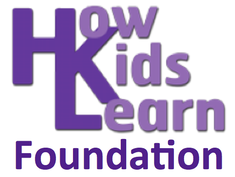
The HKL Foundation (www.howkidslearn.org) is a 501(c)(3) organization. It is dedicated to improving the effectiveness of settings that support the education and healthy development of youth. This includes schools and out-of-school time programs. The HKL Foundation provides educational and training activities that promote the capacity of organizations that support the education and healthy development of youth. Examples of activities include conferences, speaker forums, screenings of relevant films, training sessions, coaching sessions, the awarding of digital badges to acknowledge exemplar programs and the learning that happens within these settings. Activities also include the development and distribution of educational materials (papers, self-assessment tools, videos, program guides, and more).
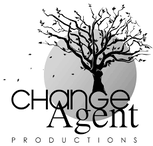
Change Agent Productions (CAP) was a vital partner in the development of the History of Afterschool documentary. CAP, a program of the YMCA of Greater Long Beach, is a social enterprise comprised of professional digital media artists who work alongside urban youth to create professional video productions, graphic design projects and digital media trainings with attention to detail, quality, creativity and promptness.
Co–Sponsors:
The organizations below donated funds to support the History of Afterschool media kit and learning guide.
Co–Sponsors:
The organizations below donated funds to support the History of Afterschool media kit and learning guide.
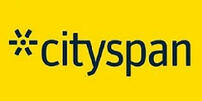
Cityspan is a leading cloud-based provider of data management systems for tracking social service programs, funding, and outcomes. For more than 15 years, we’ve helped schools, government agencies, and nonprofit organizations design and apply field-friendly tools that streamline workflows, demonstrate accountability, and drive analyses for improved performance. Working with you, we fit our technology to your organizational objectives, funding requirements, and data priorities.
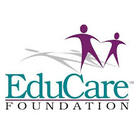
EduCare Foundation’s mission is to inspire and empower young people to become responsible citizens, compassionate leaders, and to live their dreams. They accomplish this through the sponsorship and management of afterschool programs, as well as training workshops for youth, educators, and parents.
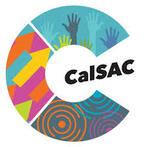
The California School-Age Consortium (CalSAC) builds professional networks that provide training, leadership development and advocacy to ensure that all young people have access to high quality out-of-school time programs and to create a more equitable future for California.
RESEARCH INTERVIEWEES FOR THE HISTORY OF AFTERSCHOOL DOCUMENTARY (IN ORDER OF APPEARANCE)
Pedro Noguera, University of California, Los Angeles (Narrator)
Pedro Noguera is Distinguished Professor of Education at the Graduate School of Education and Information Sciences at UCLA. His research focuses on the ways in which schools are influenced by social and economic conditions, as well as by demographic trends in local, regional and global contexts.
Ellen Gannett, National Institute on Out-of-School Time
Ellen S. Gannett is director of the National Institute on Out-of-School Time (NIOST) at the Wellesley Centers for Women at Wellesley College. A national action/research project, NIOST has provided research, evaluation, technical assistance, consultation, and specialized training on afterschool programs throughout the United States for more than 35 years.
Gordon Alexandre, Glendale Community College
Gordon Alexandre taught U.S. history and political science at Glendale Community College (outside Los Angeles) from 1985 to 2015. His main area of interest was on social reform movements of the Twentieth Century. Since retiring in 2015, Gordon has delivered several lectures to graduate students at Antioch University on “Trumpism: A Historical Perspective” and “Student Protest Movements: 1968 to 2018".
Jane Quinn, Children’s Aid Society
Jane Quinn is Vice President of the Children’s Aid Society (CAS) and Director of National Center for Community Schools. Earlier in her career, she directed a national study of youth organizations for the Carnegie Corporation of New York, which resulted in the publication of a book entitled A Matter of Time: Risk and Opportunity in the Non-school Hours.
Karen Pittman, Forum For Youth Investment
Karen has made a career of starting organizations and initiatives that promote youth development – including the Forum for Youth Investment (FYI), which she co-founded in 1998. Prior to co-founding Forum FYI, Ms. Pittman worked on behalf of several organizations including the Children’s Defense Fund. In 1995 Karen joined the Clinton administration as director of the President’s Crime Prevention Council.
Robert Granger, Formerly at W.T. Grant Foundation
Robert Granger served as the president of the William T. Grant Foundation (WTGF) from 2003 until his retirement in September 2013. Before joining the WTGF, Granger served as senior vice president of the Manpower Demonstration Research Corporation (MDRC), a nonprofit, nonpartisan education and social policy research organization dedicated to learning what works to improve programs and policies that affect the poor. Granger also chaired the National Board for Education Sciences.
An-Me Chung, The Mozilla Foundation
At the time of the filming, An-Me Chung was Chief of Partnerships and Policy at the Mozilla Foundation. Previously, she served as associate director of education for U.S. Programs at the John D. and Catherine T. MacArthur Foundation. Earlier in her career, she served as a program officer at the C.S. Mott Foundation, where she focused on supporting young people with optimal opportunities for learning and enrichment beyond the traditional classroom.
Brian Lee, Fight Crime: Invest in Kids
In 2000, Brian Lee helped found the California office of Fight Crime: Invest in Kids, where he now serves as State Director. Brian has led efforts to win investments and policy changes in after-school programs, early education, juvenile justice interventions, college and career readiness, dropout prevention, and school discipline reform. He has authored and co-authored over a dozen reports on these issues.
Terry Peterson, C.S. Mott Foundation and Afterschool Alliance
Terry K. Peterson is an Education Consultant at the C.S. Mott Foundation and
National Board Chair for the Afterschool Alliance. Dr. Peterson served as the chief education advisor to the U.S. Secretary of Education for eight years, where he helped develop education improvement strategies, such as Advanced Placement, E-Rate, 21st Century Community Learning Center, and teacher quality initiatives.
Deborah Lowe Vandell, University of California, Irvine
Deborah Lowe Vandell, Ph.D., is the Founding Dean of the School of Education at the University of California, Irvine, where she is a Professor of Education and of Psychology and Social Behavior. The author of more than one hundred fifty articles and three books, Dr. Vandell studies the effects of afterschool and summer programs on children's academic, social, and behavioral development.
Sylvia Yee, Formerly at Evelyn and Walter Haas, Jr. Fund
Sylvia Yee, former Vice President of Programs at the Evelyn and Walter Haas, Jr. Fund, started her career as a high school teacher. She moved on to administer educational programs at the elementary, secondary, and university levels in the United States and in China.
Margaret Brodkin, Brodkin & Associates
Margaret Brodkin is a nationally recognized children’s advocate and policy pioneer and known as the “Mother of the San Francisco Children’s Fund,” a multi-million dollar annual fund that made San Francisco the first city in the country to provide local dedicated funding for children. She is currently Founder and Director of Funding the Next Generation.
Joe Hudson, Alameda County Office of Education
Joe Hudson is currently the Region 4 Lead & Program Manager for Before and Afterschool Programs. He coordinates and provides technical assistance and training for seven San Francisco Bay Area counties and more than 500 after school program sites.
Bonnie Reiss (1955 - 2018), USC Schwarzenegger Institute
Bonnie Reiss, who passed away after we recorded her interview, led a remarkable life, with a career that included ground-breaking accomplishments. While Bonnie’s background and experience was diverse, her primary expertise and focus was in the areas of education, environment, health and wellness and issues that impact women and children. Most recently she served as California Secretary of Education and on the University of California Board of Regents. She also served as the Global Director of the USC Schwarzenegger Institute.
Carol M. Tang, Children’s Creativity Museum, San Francisco
Carol M. Tang, Ph.D., Executive Director, Children’s Creativity Museum
Dr. Tang is the former Director of the Coalition for Science After School. She is experienced in non-profit management, strategic planning, envisioning, meeting facilitation, team building, fundraising and public speaking. She also has extensive experience in teaching, organizing, and leading science education efforts.
Jennifer Peck, Partnership for Children and Youth
Jennifer Peck is a founding staff member of the Partnership for Children & Youth (PCY), joining in 2001 and becoming the executive director in 2003. Since then, she has developed and implemented initiatives to finance and build after school and summer learning programs, and increase access to school meals and nutrition education programs in the Bay Area’s lowest-income communities.
Jamie Lopez, East Bay Asian Youth Center (EBAYC)
Jamie Lopez served as Deputy Director of Elementary Schools for EBAYC, where she led the design, implementation and continuous improvement of eight after school programs and chronic absence reduction campaigns and family case management at four schools.
Shawn Ginwright, San Francisco State University
Dr. Ginwright is Associate Professor of Education in the Africana Studies Department at SFSU and is a leading national expert on African American youth, youth activism, and youth development. He founded Leadership Excellence Inc. an innovative youth development agency located in Oakland, California that trains African American youth to address pressing social and community problems.
Lynn Johnson, Spotlight: Girls
Lynn Johnson is a social entrepreneur, theater teaching artist, and girl advocate dedicated to igniting a compassion revolution through theater and expressive arts. She is the Co-Founder/CEO of Glitter & Razz Productions LLC based in Oakland, CA. Glitter & Razz produces Go Girls! Camp. Lynn is an expert on the topics of OST and youth development, gender and racial equity, and theater as an intervention for young people.
Ashanti Branch, Ever Forward Club
Ashanti Branch is Founder and Executive Director of the Ever Forward Club, dedicated to working with young men of color and how they interact with their education. Raised in Oakland, Ashanti later taught high school math, where he realized his passion to provide support for African American and Latino males who were not achieving to their potential.
Jodi Grant, Afterschool Alliance
The Afterschool Alliance is a nonprofit public awareness and advocacy organization working to ensure that all children and youth have access to quality, affordable afterschool programs. As the Executive Director, Jodi oversees all aspects of the Afterschool Alliance’s work, including supervising research, and creating and expanding quality afterschool programs.
RESEARCH INTERVIEWEES (NOT SHOWN):
Carla Sanger, Formerly at LA’s BEST
From 1988 to 2015, Carla Sanger, M.Ed., served as president and chief executive officer of LA's BEST (Better Educated Students for Tomorrow) After School Enrichment Program.
Carla has been a specialist in children's education policy and advocacy in both the public and private sector. She served as executive director of LA Child Care & Development Council, president of the California Children's Council, and co-chair of the California State Department of Education Task Force on School Readiness.
Gil Noam, The PEAR Institute
Gil Noam, Ed.D., is the founder and director of The PEAR Institute: Partnerships in Education and Resilience at McLean Hospital, a Harvard Medical School affiliate. He is also an associate professor at Harvard Medical School. He served as the director of the Risk and Prevention Program and is the founder of the RALLY Prevention Program. He serves as the editor-in-chief of the journal New Directions for Youth Development: Theory, Practice and Research with a strong focus on out-of-school time.
